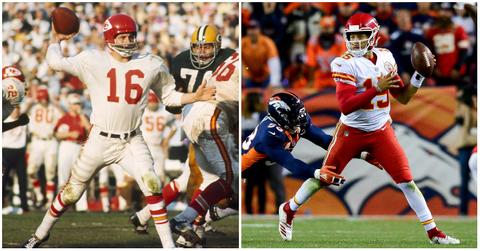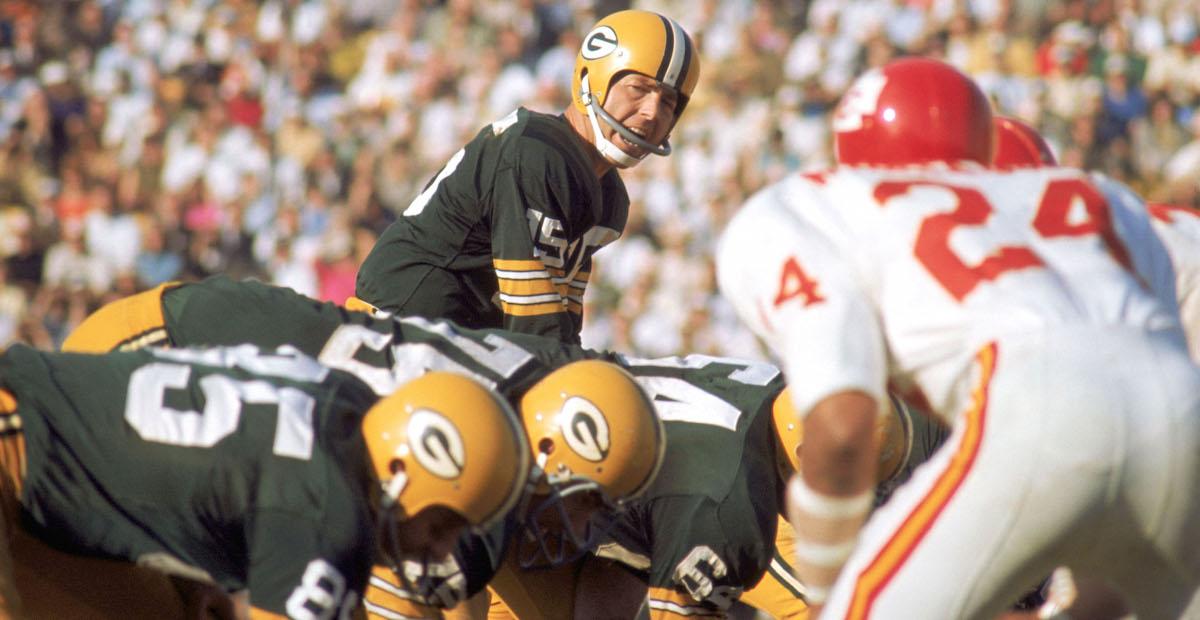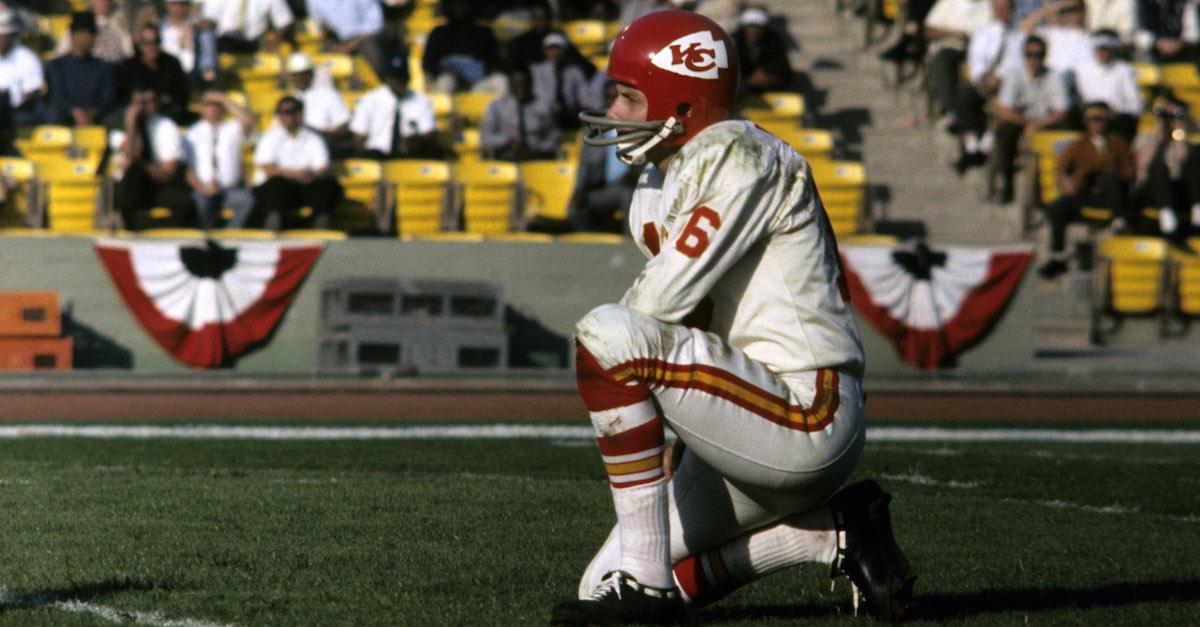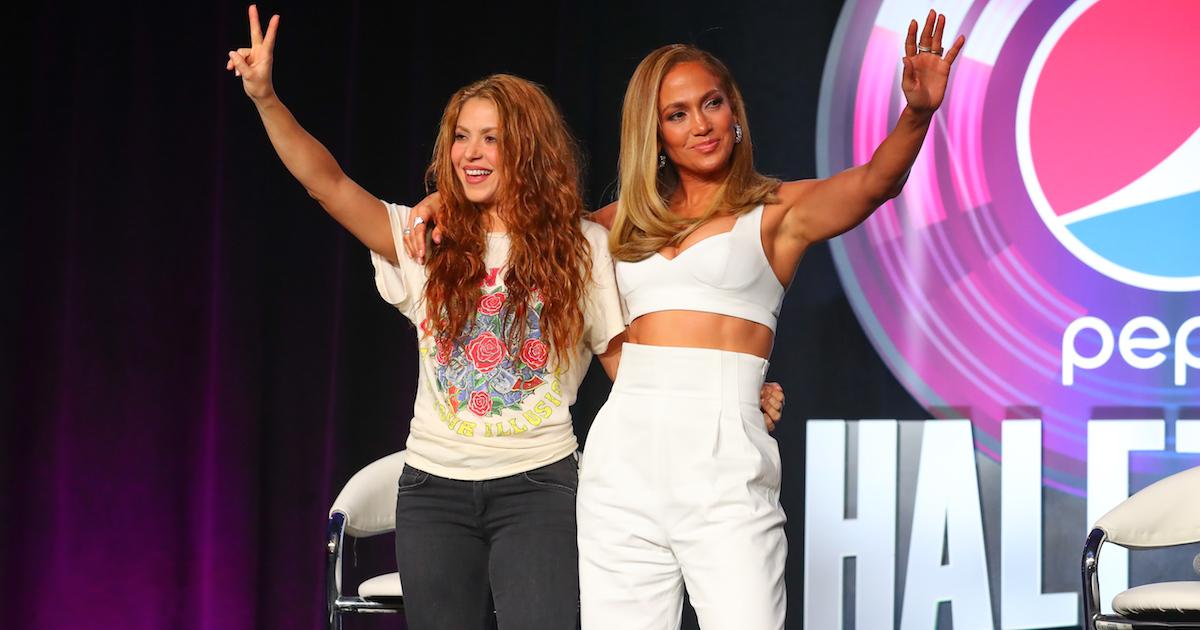Here's How Much Things Have Changed From Super Bowl I in 1967 to Super Bowl LIV
Updated April 28 2021, 5:01 p.m. ET

In America, there's really nothing more sacred than football. The Super Bowl is one of the most celebrated days in the calendar year, and nearly 100 million people watched the 2019 championship game. Because the Super Bowl, its halftime show, and the ads have an unparalleled viewership on one Sunday each year, it's hard to imagine a time when this day wasn't embedded in American culture.
Believe it or not, the Super Bowl has only been an event since 1967, and things were far different back then. From the five figure ad slot prices to the viewership, nobody was anticipating just how big the final game of the season would become. In honor of the biggest unofficial national holiday of the year, we're comparing just how different the first super bowl was vs. the 2020 one.

What teams played in Super Bowl I?
On Jan. 15, 1967 the first Super Bowl ever was played in the Los Angeles Memorial Coliseum, a National Historic Landmark that has since been the home of the University of Southern California football team. The stadium is also the place where two Olympic games have been hosted (and a third will take place there in 2028 when L.A. hosts the Summer Olympics again).
The Green Bay Packers and the Kansas City Chiefs played in the historic first Super Bowl. Going into the final game, Green Bay was heavily favored, and the Wisconsin team won the game with a score of 35 to 10. Though the game was close in the first half, Green Bay scored three touchdowns in the second half.
Bart Starr was the winning team's quarterback. He passed away in May of 2019 at the age of 85.

Hall of Famer Len Dawson was the quarterback at the time for the Chiefs. He went on to win a Super Bowl in 1970 for the team, which, before 2020, was the last time the Chiefs had appeared in a Super Bowl.
Len retired from football in 1975, which was several years before any current player in the NFL was born (Tom Brady is currently the oldest active player in the NFL, and he was born in 1977).
In 2020, the Chiefs are once again playing in the Super Bowl against the San Francisco 49ers. Patrick Mahomes is the quarterback for the Chiefs, and he beat Len Dawson's single-season passing touchdown record in 2018.
Jimmy Garoppolo is the quarterback for the 49ers.
The 2020 championship game is taking place in the Miami Dolphins' home stadium.
Super Bowl I was broadcast on multiple networks.
While the major networks alternate each year for the opportunity to broadcast the game, Super Bowl I was the only championship game to be broadcast on two networks. CBS had the exclusive right to broadcast NFL games, and NBC had the right to play AFL games. Both networks were therefore allowed to play the final game that was between the AFL and NFL champion teams. With two networks playing the game, there was double the opportunity for ads.
Of course, now the game is only shown on one network each year. The time slot directly after the Super Bowl is also one of the most coveted for TV shows. The programs shown after the game usually bring in the highest ratings, and a new audience. For the 2020 Super Bowl, The Masked Singer Season 3 will premiere afterward.
In 1967, Lassie aired an episode called "Lassie's Litter Bit" directly after the Super Bowl on CBS. On NBC, Walt Disney's Wonderful World of Color came on directly after the game.
The halftime shows were far less of a spectacle at Super Bowl I.
When a game isn't terribly close in score, the Super Bowl halftime show can become the true main event. While fans are eager to see JLo and Shakira take the stage in the 2020 event, the 1967 Super Bowl's halftime show consisted of regular people.
At Super Bowl I, the halftime performers included both the University of Arizona and Grambling State University marching bands, the drill team and flag girls from Anaheim High School, and trumpeter Al Hirt.

These were the ads shown during the first Super Bowl:
It's common knowledge that getting an advertisement slot during the Super Bowl will cost more than a pretty penny. There is no event that sells higher ad spaces than the final NFL game of the season. Because the viewership is in the dozens of millions, the ads have become a separate entity, and some people just tune in just to watch them.
A 60-second Super Bowl LIV ad will set companies back a whopping $11.2 million, according to The Hollywood Reporter. While 30-second ads are also an option at just under $6 million, many companies forgo a shorter time slot because the ads are believed to be less effective.
Companies known for their Super Bowl ads include Doritos, Budweiser, and Bud Light, and the heads of these brands would probably not be thrilled to learn that the price for an ad in the first Super Bowl was more than $10 million cheaper.
A 30-second ad in 1967 would cost companies just $37,500, meaning that a 60-second ad would cost just $75,000. When adjusting for inflation, $37,500 in 2020 standards would be about $286,359 according to DollarTimes.com.
According to a report done by the Smithsonian Magazine in 2019, companies including Budweiser, Ford, RCA, Chrysler, Goodyear, RJ Reynolds Tobacco, and McDonald's were just a few who aired ads.
Apparently, the advertisers weren't expecting women to tune into the game, so the ads were targeted directly at men.
One ad that was shown during the event was for Goodyear tires. The sexist content would shock a 2020 audience, but in 1967, many advertisements were appealing to the "man of the house."
"This flat tire needs a man. But, when there's no man around, Goodyear should be," the narrator in the ad says.
In 2020, some of the companies that shelled out that multi-million dollar price for a Super Bowl ad include Heinz Ketchup, Porsche, Doritos, Hyundai, GMC, Amazon, Facebook, and multiple candidates running for president in the 2020 election.
One notable ad includes the viral death of Mr. Peanut, which relied in advance on social media for buzz. Talk about a far cry from advertising tactics in 1967.
It's fair to say that things are vastly different when comparing the 1967 and 2020 Super Bowls games. The championship kicks off on Feb. 2 at 6:30 p.m. EST on Fox.